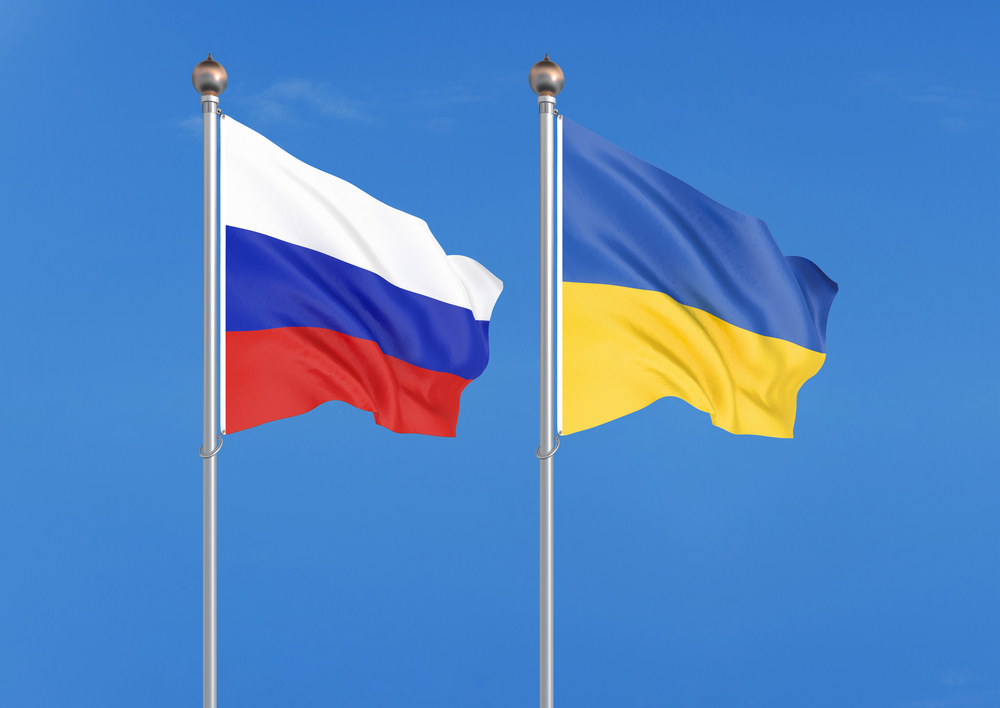

This article is only available to Macro Hive subscribers. Sign-up to receive world-class macro analysis with a daily curated newsletter, podcast, original content from award-winning researchers, cross market strategy, equity insights, trade ideas, crypto flow frameworks, academic paper summaries, explanation and analysis of market-moving events, community investor chat room, and more.
Summary
- Peace talks between Russia and Ukraine are set to proceed under President Trump. But the implications remain unclear.
- We analyse three scenarios: sustained ceasefire, temporary ceasefire and a failed deal. We also give likely market reactions for each.
- While we do not attach likely probabilities to each scenario, we review Trump’s latest position and the associated difficulties of each approach.
Market Implications
- A sustained ceasefire would mean fewer ECB cuts priced in, lower energy prices and weakness in defence stocks. In CEE, PLN stands to benefit more than CZK or HUF.
- A failed deal would mean risk-off in Europe, EUR weakness and higher energy prices.
- A temporary ceasefire would see limited positivity with scope to fade any risk on.
Trump to Force Russia to the Negotiating Table
Optimism over possible peace talks between Russia and Ukraine is already boosting sentiment towards the Polish zloty. Trump’s recent comments that he would increase sanctions on Russia should Moscow refuse to negotiate raises the possibility of him taking a hard line, although the efficacy of new sanctions will be low.
Russia’s invasion of Ukraine in February 2022 and the subsequent sanctions on Russian oil and gas triggered significant market reaction. Outside oil and gas, EUR weakness was exacerbated, CEE currencies spiked to new highs, and Europe’s dependence on Russian energy amplified concerns of an industrial downturn.
We examine the scenarios for a potential ceasefire under Donald Trump and what it means for wider markets.
Outcome Scenarios
Negotiations will probably hinge on Trump’s view of how much land Ukraine should relinquish. We see three likely scenarios:
Credible Sustained Peace Deal
This would probably require economic / military threats from the US with international peace-keeping force.
Market response: EUR positivity, lower energy prices initially, but this should eventually fade. Longer-term supply growth in Russia should be solidified as Western investment can re-enter. Risk-on in Europe, positive long-term EZ manufacturing albeit probably negative defence stocks, fewer ECB cuts priced. Rally in CEE FX, particularly PLN, given possibility of reduced defence spending.
Temporary Ceasefire
Large unknowns surround this scenario, with hostilities likely to flare up again. Ukraine has often criticised ceasefires as Russian plots to shore up strength before resuming fighting (as during the War in Donbas, 2014-2022).
Market response: Limited positivity. Possible for market to price similarly to the longer-term peace deal (positive EUR, risk-on). We would fade such reactions on high likelihood of fighting resuming. US response will be key – regardless of sustainability of peace, they could use this as an opportunity to stop arming Ukraine (ostensibly, crisis over). Europe will have to pick up the slack.
Net-net, the current trend continues – long EZ defence stocks, lower energy prices initially, continued market bearishness on EZ (even if this is overdone in our view). EM oil importers under pressure, negative PLN.
Deal Fails or Ceasefire Collapses
The political fallout will depend on whether the US perceives the failure to be due to Russian or Ukrainian intransigence/action. Therefore, what Trump decides is a ‘reasonable’ amount of land for Ukraine to relinquish will play a large role.
Russia blamed: as per Trump’s threats, in the world of ‘strong-man’ politics, this could trigger far greater materiel support for Ukraine. Sanction restrictions are of limited value given Russian exports to US have collapsed to 10% of pre-war quantities. New ways to pressure Russia would be needed, possibly direct force. NATO defence spending rises and US pressures allies.
Ukraine blamed: could see US restrict aid to Ukraine, leaving more weight on Europe. The US could soften its stance on Russia to further punish Ukraine or pressure European allies who continue to support Ukraine.
Market Response: Both outcomes would likely see a return to risk-off in Europe. Both oil and gas prices should rally initially.
The details of Trump’s proposal are unknown. Once they become known, we can assess the probabilities of each scenario above.
CEE Market Impact
EUR/PLN hit an all-time high of 4.98 in early March 2022, while EUR/CZK reached a high of 25.79 the same day. EUR/HUF also spiked, but the levels, at 394, were more contained. While all three central banks committed to maintaining financial stability, the main policy response was in Czechia where the CNB launched an intervention program (since ended) to prevent further weakness.
Versus the highs in March 2022, PLN is currently 18% stronger – with current levels the strongest since 2018 – while CZK is 2.7% stronger. HUF by contrast is 3% weaker.
As the most risk-sensitive currency of the three, and the one with the biggest direct exposure to Ukraine, PLN stands to benefit the most on a lasting ceasefire. A return of the nearly 1mn refugees would reduce fiscal costs, as would the possibility of lowering the budgeted 4.7% GDP in defence spending. Positive sentiment towards Europe would also benefit the zloty.
Yet EUR/PLN consistently below 4.20 has not been seen since 2015. Given the still-hawkish central bank, further zloty gains cannot be ruled out. But a lasting ceasefire as well as a win for the coalition candidate (Warsaw mayor Rafał Trzaskowski) at the May presidential election are needed to sustain appreciation from here.
For CZK, Governor Michl’s strong koruna policy and upside for the Czechia economy from improvement in Germany leave scope for FX gains. But we expect these would be mild and remain long PLN/CZK.
Hungary’s upcoming change of central bank governor and stronger links with Putin including continued gas imports from Russia leave less clear upside. EUR/HUF still above 400 leaves scope for pullback. But with pre-election spending and likely looser monetary policy later in the year, a sustained HUF rally remains unlikely.
Where Does Trump Stand on Ukraine?
Analysts have been divided on Trump’s approach to the war, with many having warned of his previous compliments towards Putin and criticisms of Zelensky.
Much has also been made of his key cabinet appointments:
- Tulsi Gabbard to head of DNI (subject to approval) previously backed Putin/Assad on the Syrian conflict.
- Pete Hegseth to Secretary of Defence – has at different times called Putin a war criminal but also refused to confirm support for aid to Ukraine.
Yet looking too deeply into these appointments can be misleading. More telling are Trump’s own most recent comments. His latest on TruthSocial included that Putin needs to:
“…Settle now, and STOP this ridiculous War! IT’S ONLY GOING TO GET WORSE. If we don’t make a ‘deal’, and soon, I have no other choice but to put high levels of Taxes, Tariffs, and Sanctions on anything being sold by Russia to the United States, and various other participating countries.”
And that:
“We can do it the easy way, or the hard way – and the easy way is always better.”
(Random capitalisation present in the original)
Trump does not appear ideologically against more support for Ukraine; he just wants a quick deal to confirm his approach is better than Biden’s. His strong-man approach to politics and deal-making could trigger escalation in support for Ukraine. Yet further sanctions will struggle to raise pressure on Russia, increasing the risk of more forcible threats (which in turn could trigger new risk-offs).
Territorial Transfer Is Key
The US will likely push for Ukraine to concede some of the occupied territory (Chart 1, red). Zelensky in late November shifted more favourably towards this (albeit not to give up territory permanently).
Russia would likely push for the full control of the four oblasts (Donetsk, Luhansk, Kherson and Zaporizhzhia), where it conducted sham referendums to annex in 2022 (dotted red line). That would include the currently Ukraine-held cities of Zaporizhzhia and Kherson and is unlikely to be acceptable to Ukraine.
Complicating matters is that Ukraine currently occupies some of Russia’s Kursk oblast (blue area). Russia is highly unlikely to accept Ukrainian sovereignty over this region (nor does Ukraine likely want it), but its occupation weakens their claims to regions they currently occupy in Ukraine and especially the areas that they do not.
Russia Wants No NATO, Ukraine Wants Guarantees
Russia will want explicit promises for Ukraine not to join NATO. While Ukraine is very unlikely to accept that, the US could promise to veto membership ahead. Ukraine will then want other security guarantees (weapons from the West, international peacekeepers etc.).
Unlike the territorial transfer, this will be more about leaders being able to sell the outcome to their respective populations, rather than tangible achievements. As such there is probably more room for compromise.
